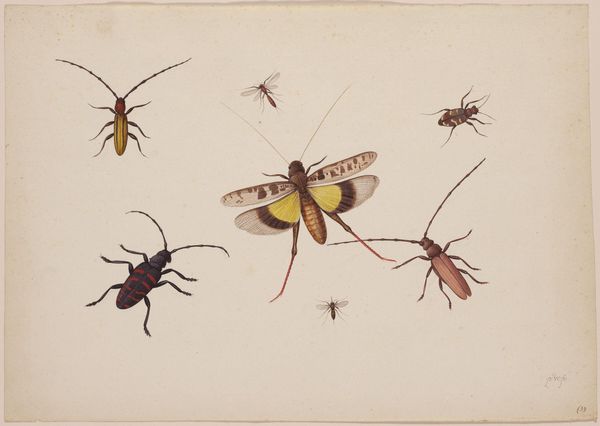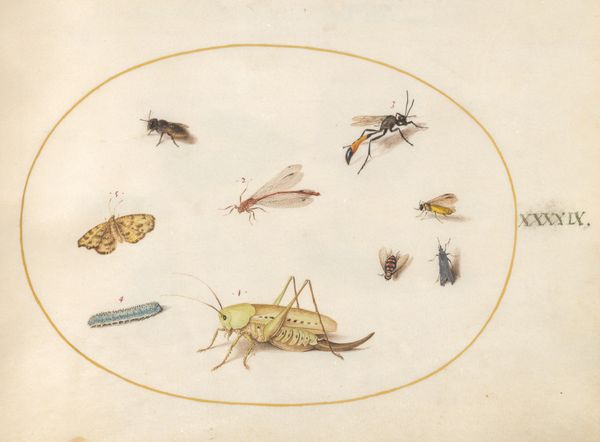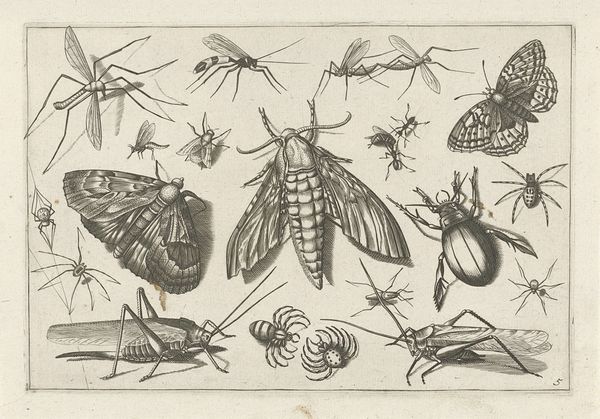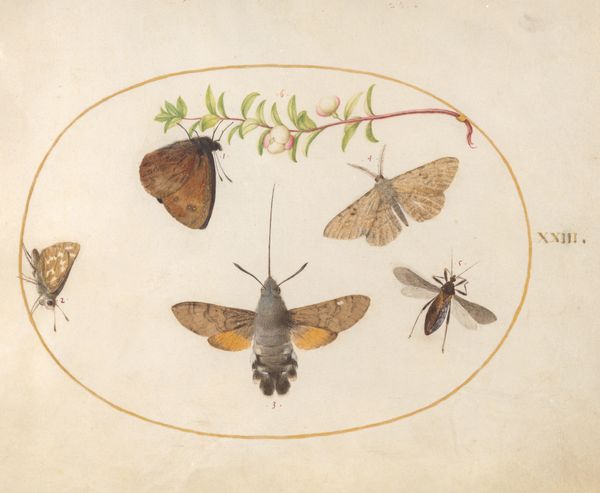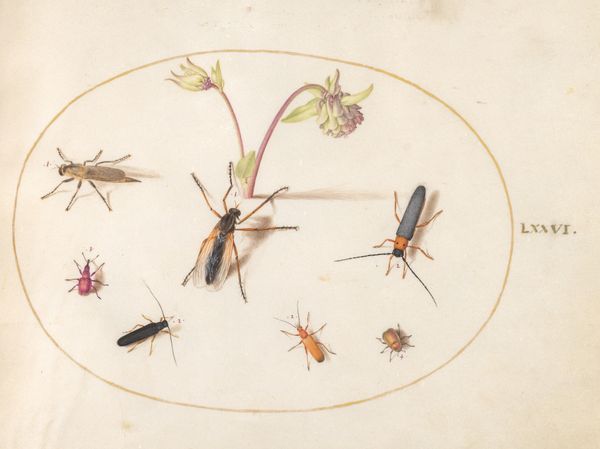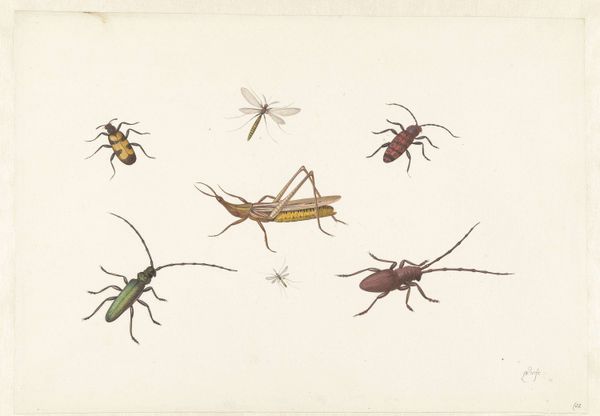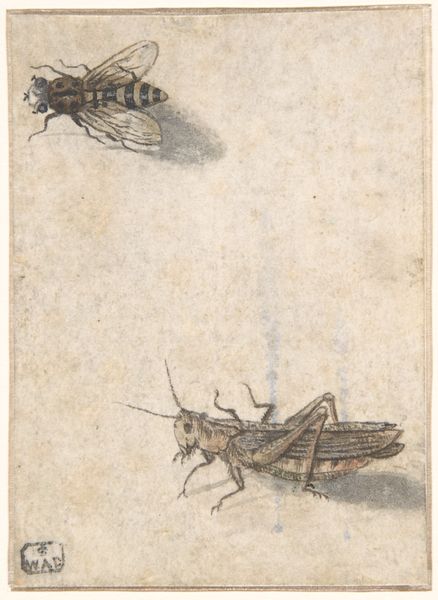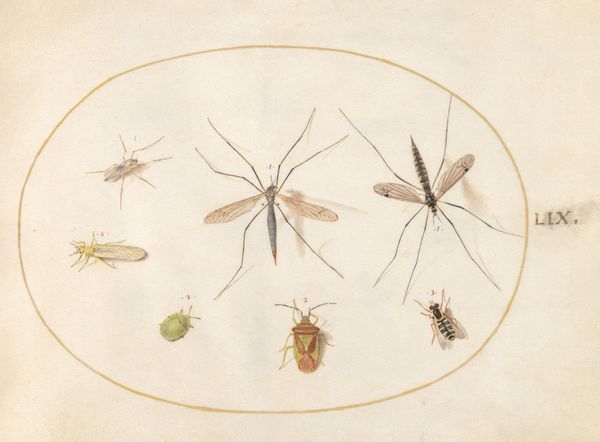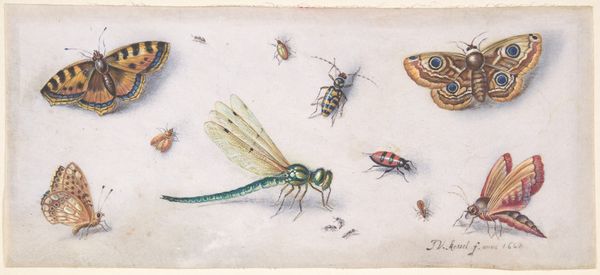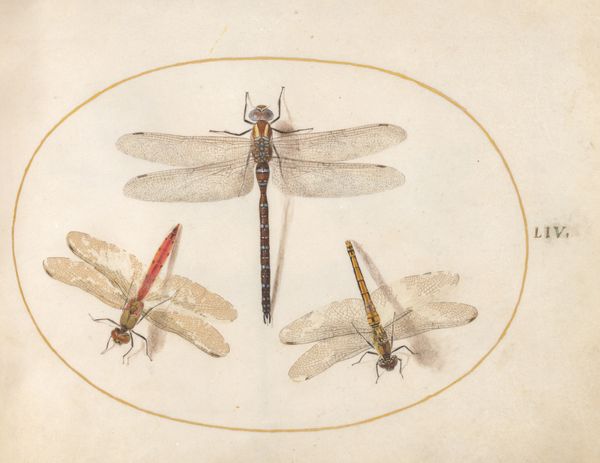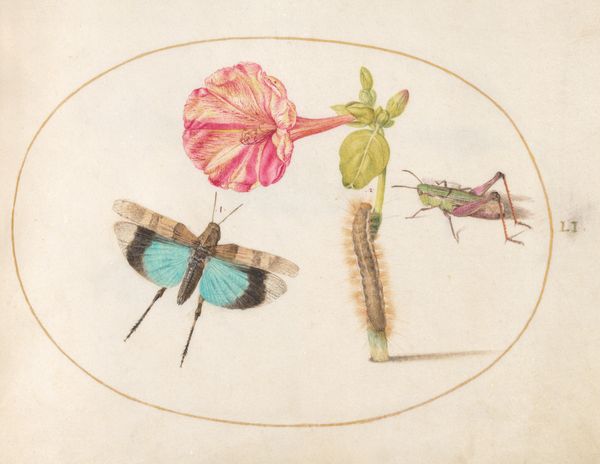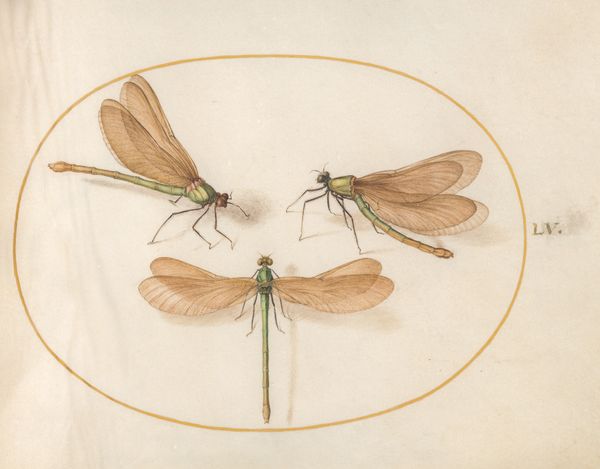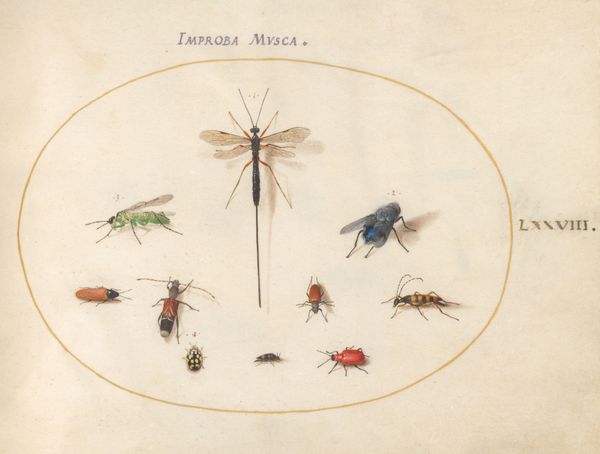
drawing, watercolor
#
drawing
#
mannerism
#
figuration
#
11_renaissance
#
watercolor
#
coloured pencil
#
watercolour illustration
Dimensions: page size (approximate): 14.3 x 18.4 cm (5 5/8 x 7 1/4 in.)
Copyright: National Gallery of Art: CC0 1.0
Curator: This watercolor and ink drawing presents two exquisitely rendered hawk moths against a pale backdrop. It is titled “Plate 26: Two Hawk Moths,” created circa 1575-1580 by Joris Hoefnagel. Editor: I’m struck by the delicate quality, yet there’s something unsettling about it. Is it the stark contrast between the fragile beauty of the moths and the somewhat clinical depiction, almost as if they’re specimens? Curator: That's a perceptive reading. Hoefnagel was deeply involved in the scientific and artistic culture of the late Renaissance, where careful observation and documentation of the natural world became increasingly valued. These insect drawings were part of a larger trend— the rise of natural history illustration, intended to serve not just aesthetic, but scientific ends. Editor: So, not just pretty pictures, but encyclopedic efforts? The visual vocabulary of power then seems very significant to consider within that scientific gaze. Moths often signify transformation and mystery, subjects not easily captured under empirical methods. Is Hoefnagel trying to reconcile art and emerging science, or something else? Curator: Perhaps, because moths are night creatures often linked with unseen spiritual forces. Hoefnagel was working within the Mannerist style, a period known for its visual complexity and embracing allegory and symbolism. The insects may carry a spiritual metaphor relevant to the educated court audiences that admired these images. Editor: Ah, so these aren't just pretty insects pinned to a page. The work seems to imply hidden symbolic meanings – transformations of the soul perhaps? I find this piece a fascinating window onto Renaissance sensibilities, revealing an aesthetic culture grappling with scientific inquiry, the spiritual realm and ideas about power. Curator: Indeed, its beauty resides not just in the skill of execution, but in this tension you point out, a conversation between worlds – art and science, the seen and the unseen. Editor: I see it too now. An unsettling but elegant expression of its time.
Comments
No comments
Be the first to comment and join the conversation on the ultimate creative platform.
